The right mix of conference rooms in the office
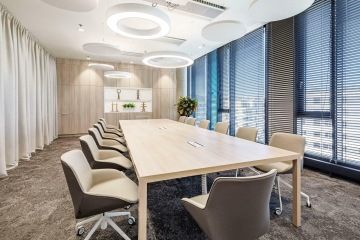
Meetings are an important component of office work. Conference rooms for meetings with colleagues or clients are traditionally used for this purpose. Each meeting has a different character. Nevertheless, some companies have meeting rooms built according to a single mould. Discover with us different types of conference rooms and their advantages.
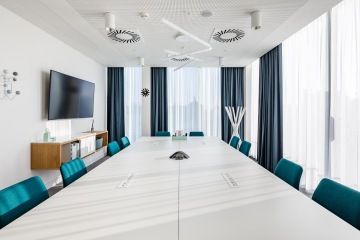
How to determine the number and type of conference rooms?
A large room can accommodate many more people, but how often are such meetings really held? The number and capacity of conference rooms that your company should have depends on the number of your employees, the layout of the workspace, and the frequency of meetings. Of course, corporate culture also plays a big role.
Types of conference rooms in terms of size
Abandon the idea that a conference room must be a long space with a large table and lots of chairs around it. Here is an overview of the most popular types of conference room that can be used in the office.
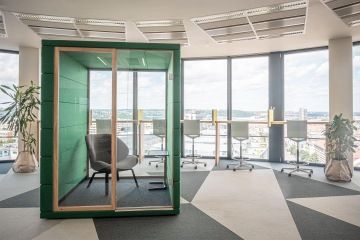
Freestanding phone booth
Nowadays, meetings take place more and more often online or over the phone. Hence, there should be a space in the office where employees can handle a video call in peace and privacy. Yes, it's not really a conference room, but it is definitely necessary to mention this variant. Micro offices can be for one or more people. A huge advantage is the possibility to easily relocate them. Take a look at how we incorporated phonebooths into Ness offices.
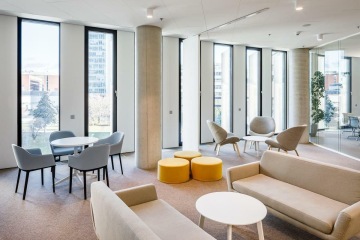
Open meeting zones
Meetings between colleagues most often take place in small groups. Sometimes you don't even need a table or a room for this purpose. The relaxation area with comfortable and original furniture near the kitchen is an ideal meeting place for small teams.
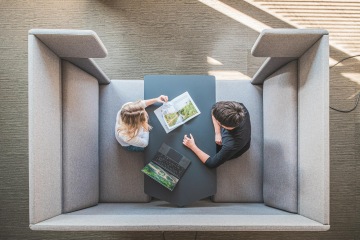
Coupé
Another great idea is an open meeting room for quick meetings reminiscent of a train compartment. You will not disturb your colleagues, as they are on the open space side, and you do not have to book the room.
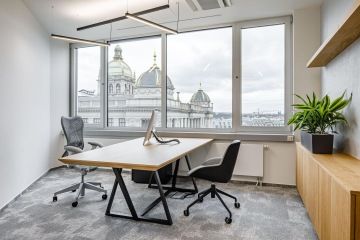
1-to-1 rooms
Unlike the above, confidential matters are dealt with here.
It is necessary to ensure top-notch acoustic soundproofing.
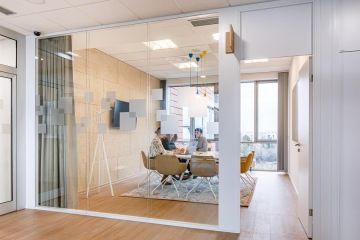
Team room
A space designed especially for brainstorming and dealing with team tasks. The maximum number of people in this room should be around six and there should be a whiteboard for jotting down ideas. This type of room also works great as a teaching space for small groups of employees.

Workshop room
For workshops, it is advisable to have a room prepared for different types of meeting arrangements and different uses. Easy-to-move furniture helps.

Huddle room
A small meeting room for three to six people, equipped with audio/video technologies for quick team meetings. It is ideal for scheduled and unplanned business meetings, allowing the team to converse without reserving a larger room.
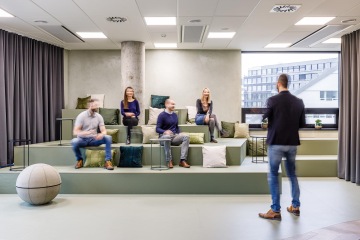
Lecture room
A large space for conferences and lectures, which can easily accommodate 50 or more people. These rooms are worth building flexibly so that they can be cleverly transformed into several smaller separate places for meetings and relaxation.
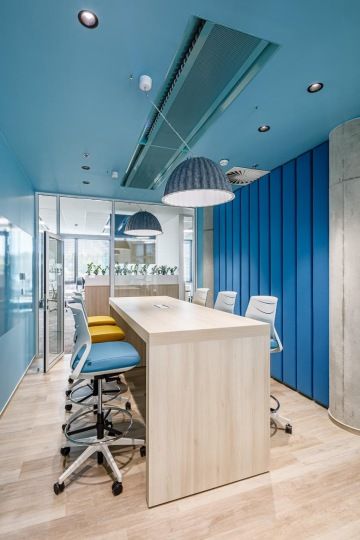
Small conference room
Especially for coordination meetings. It can vary by featuring comfortable seating for longer meetings or a standing table. Smaller dimensions are suitable for both fast and efficient meetings, as well as for longer meetings, where it is important to work closely in a small team.
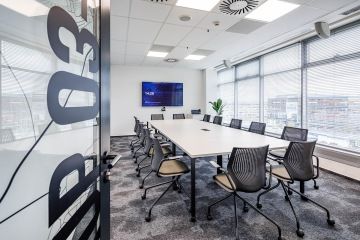
Classic large conference room
The type of room that everyone is likely to imagine when we say "conference room." A space with one long table and seating for dozens of people. We recommend building it especially where there are regular formal meetings in larger groups. It does not automatically have to be a part of every office. Technical equipment for projection and remote meetings also plays an important role in these spaces.

Design conference rooms
The conference room definitely doesn't have to be a grey glass box. On the contrary, they are a great opportunity to involve corporate identity and creative elements. The type of seating again depends on the expected number of employees in the room and the corporate culture. Where meetings with clients take place, beanbags are not a good idea. Instead of a strict sequence of chairs, however, you can choose, for example, a combination of a low table and comfortable sofas.
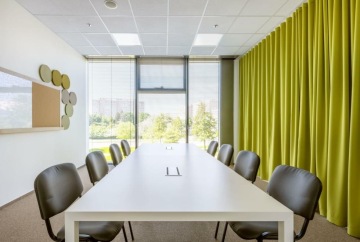
Acoustic elements
When designing conference rooms, it is necessary to thoroughly address the acoustics. Design acoustic screens or patterns, curtains, lamps, a carpet or suitable wallpaper can help. And don't forget the technical elements like ventilation and heating. Air quality, acoustics and temperature are among the most important factors determining employee satisfaction and productivity. Conference rooms should not be freezers or communal saunas.
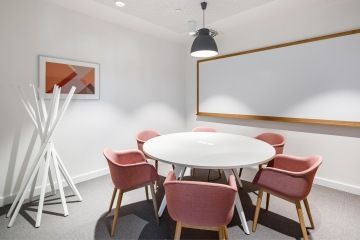
Where to place
the conference room?
Employees don't want to waste time moving from their workplace to the other side of the building for appointments. Especially smaller conference rooms are therefore worth placing throughout the office and close to places where colleagues naturally meet.
Conference rooms ideally support
meetings and cooperation
However, a poorly chosen type of room can discourage them. Their design, layout and equipment must be tailored to the company's resources and employee requirements. A great example of a suitable mix of different types of meeting rooms can be found in the new offices of Avast, which contains a total of 24 meeting rooms – 14 for pre-scheduled meetings and another 10 for informal meetings.
Do you want to prepare your offices for productive meetings? Take advantage of our workplace consulting service and plan changes with us for the success of your company.
Authors of photos: Lukáš Hausenblas, Tadeáš Seidl, Petr Andrlík, Prokop Laichter, FR/VR
Published October 21, 2021.